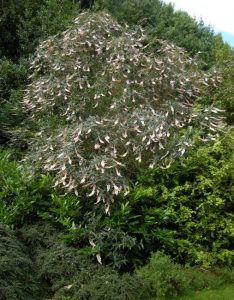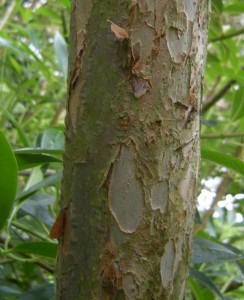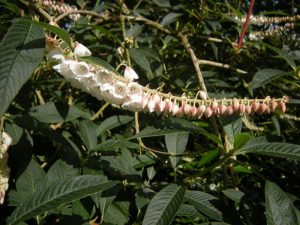Late July sees Clethra delaveyi clothed in long racemes of scented flowers. These are held gracefully at the ends of the shoots. The fused, cupped white petals shelter the green anthers. These individually open from the base to the terminal point of the raceme in succession. As the petals drop the prominent style is left held in the folded sepals.
This is a tall, open, deciduous shrub with dark green leaves, the under-surface lighter to grey in colour. The terminal buds are distinctive with a bulbous shape.
At this time of year, the hidden feature deep in the canopy is the sea-washed shades of brown and grey bark on the mature wood.
A native to Yunnan Province in south-west China, it has been cultivated since the early part of the 20th century when it was initially thought to be tender. The Garden’s specimen was introduced from seed collected by George Forrest when travelling through the Cangshan mountains near Dali in Yunnan Province during the 1930s.
More recent collections have been made at heights of 2,700 to 3,270 metres on ridges in rhododendron forest and through mixed evergreen and low deciduous forest.



